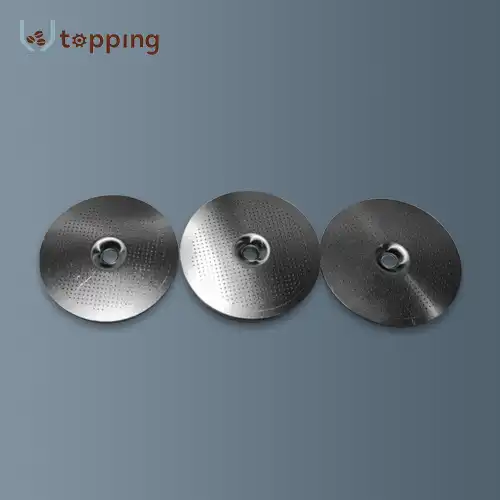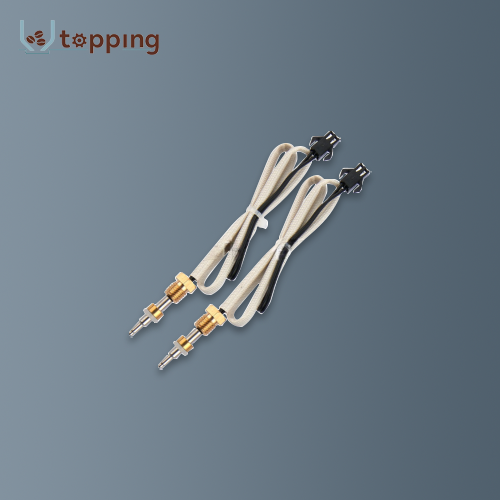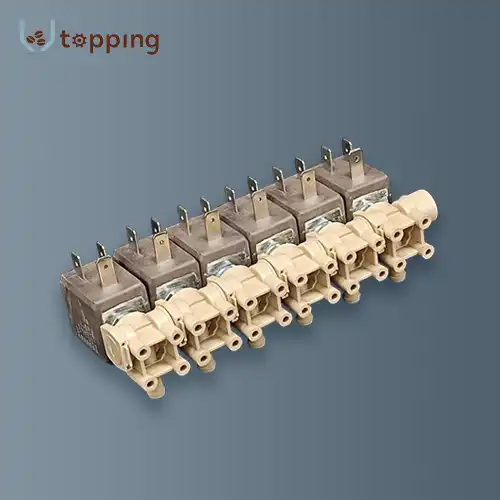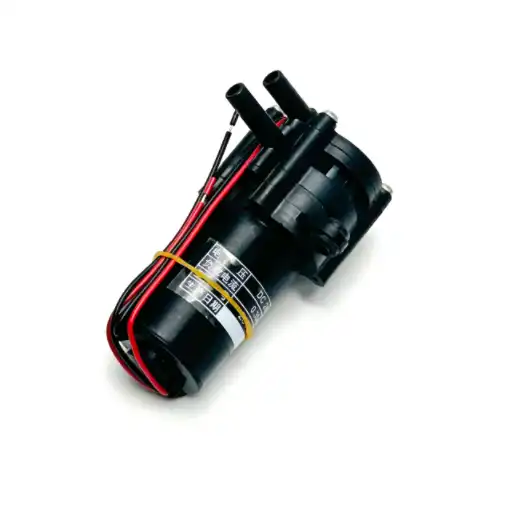What Are the Key Features to Look for in a Coffee Grinder Motor?
2024-07-22 14:25:02
In the domain of espresso processors, the engine assumes an essential part in deciding the exhibition, effectiveness, and life span of the hardware. It is essential to have a solid understanding of the primary characteristics of a coffee grinder motor in order to ensure a satisfying coffee grinding experience and make an educated purchase decision.
The engine is the core of any espresso processor, directing its capacity to crush beans productively and reliably. Whether you're a seasoned barista or a novice, the quality of the motor in your coffee grinder can have a significant impact on the flavor and texture of your brews. We go over the essential features to keep in mind when evaluating coffee grinder motors to improve your coffee-making routine in this blog post.
Why is Motor Power Important in a Coffee Grinder?
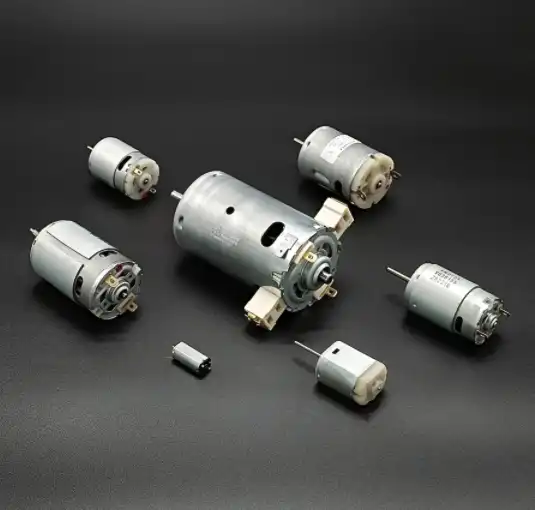
Motor power plays a crucial role in determining the effectiveness and performance of a coffee grinder, impacting its ability to grind coffee beans consistently and efficiently. When choosing a coffee grinder motor, understanding why motor power matters can significantly influence the quality of the grind and the overall brewing experience.
Importance of Motor Power in Coffee Grinders
Grinding Efficiency: The power of the motor directly influences how effectively a coffee grinder can crush and grind coffee beans. Higher wattage motors generally provide more torque, which is essential for overcoming the resistance of grinding coffee beans, especially for coarse or hard beans. This results in quicker and more uniform grinding.
Consistency of Grind: Motor power affects the grinder's ability to maintain a consistent grind size. Consistency is critical for achieving optimal extraction during brewing. A powerful motor can maintain a steady grinding speed, ensuring that each coffee particle is ground to a uniform size. Inconsistent grind sizes can lead to over-extraction or under-extraction, affecting the flavor and balance of the brewed coffee.
Handling Different Bean Types: Coffee beans vary in hardness and density based on their origin, roast level, and type. A grinder with sufficient motor power can handle a wide range of bean types without slowing down or overheating. This capability is particularly important for grinding oily or flavored beans, which can be more challenging due to their texture.
Durability and Longevity: A robust motor typically indicates better durability and longevity of the grinder. It can withstand frequent use and heavy grinding loads without wearing out quickly. Coffee grinders with powerful motors are designed to endure continuous operation, making them suitable for both home and commercial use.
Heat Management: Motor power also affects the heat generated during grinding. While grinding, friction between the burrs and coffee beans can produce heat, which may alter the flavor and aroma of the coffee if excessive. A powerful motor can mitigate this by grinding beans quickly, reducing the time they are exposed to heat.
Choosing the Right Motor Power
When selecting a coffee grinder based on motor power, consider the following factors:
Grinder Type: Espresso grinders typically require higher motor power (700 watts or more) due to the need for fine and consistent grind sizes. Brewing grinders for methods like drip coffee or French press can often operate effectively with slightly lower power (500-700 watts).
Burr Type and Size: Conical or flat burrs, along with their size and material, influence how effectively a grinder operates at various motor power levels. Larger burrs may require more power to maintain consistent performance.
Frequency of Use: For home use, a grinder with moderate motor power (500-1000 watts) is usually sufficient. For commercial environments or high-volume home use, opting for higher motor power ensures reliable performance over time.
Budget Considerations: Higher motor power often correlates with higher cost. Balancing your budget with your brewing needs can help determine the appropriate motor power for your grinder.
What RPM Range is Ideal for Coffee Grinder Motors?
The revolutions per minute (RPM) of a coffee grinder motor play a crucial role in determining its performance and the quality of the coffee grind. Finding the ideal RPM range involves balancing several factors to achieve consistent grind size while managing heat generation, which can affect the flavor and aroma of the coffee beans.
Factors Affecting RPM in Coffee Grinders
Burr Size and Material: Coffee grinders typically use either flat or conical burrs made from materials like steel or ceramic. The size and material of the burrs influence the ideal RPM for optimal grinding. Larger burrs may require lower RPM to maintain grind consistency, while smaller burrs can handle higher RPM for finer grinds.
Grind Consistency Requirements: Different brewing methods require specific grind sizes. For instance, espresso demands a fine and consistent grind, while French press requires a coarser grind. The RPM of the grinder motor must be adjusted to achieve the desired particle size consistently across batches.
Heat Management: High RPM can generate heat due to friction between the burrs and coffee beans. Excessive heat can alter the flavor and aroma of the coffee by accelerating the release of oils and aromatic compounds. Optimal RPM helps minimize heat buildup, preserving the integrity of the coffee beans during grinding.
Ideal RPM Range for Coffee Grinder Motors
The ideal RPM range for coffee grinder motor can vary based on the type of grinder and the intended use:
Espresso Grinders: Espresso requires a very fine grind to ensure proper extraction. Espresso grinders typically operate at higher RPM (up to 10,000 RPM or more) to achieve the fine particle size needed for espresso machines. The high RPM helps in quickly pulverizing the coffee beans into fine particles suitable for espresso brewing.
Brewing Grinders (Drip Coffee, French Press, Pour Over): Grinders for brewing methods like drip coffee, French press, or pour over typically operate at lower RPM compared to espresso grinders. A typical range for these grinders might be between 5000 RPM to 8000 RPM, depending on the burr size and design. Lower RPM helps in producing more consistent medium to coarse grinds suitable for these brewing methods without overheating the beans.
Commercial vs. Home Use: Commercial coffee grinders often have higher RPM capabilities to handle larger volumes of coffee beans efficiently. They are designed to withstand continuous use without overheating. Home coffee grinders may operate at slightly lower RPM to cater to smaller batch sizes and reduce noise levels.
Balancing RPM with Other Factors
While RPM is critical, it must be balanced with other factors such as motor power, burr quality, and design considerations:
Motor Power: Higher RPM typically requires a more powerful motor to maintain consistent grinding performance, especially under load.
Burr Quality: High-quality burrs can maintain grind consistency at lower RPM, reducing the need for excessively high speeds.
Design Efficiency: Efficient grinder design can compensate for lower RPM by optimizing burr geometry and motor torque.
How Does Motor Durability Impact Coffee Grinder Performance?
Durability is a critical aspect of coffee grinder motor, as it affects the grinder's lifespan and reliability over time. A durable motor can withstand frequent use and maintain consistent performance without overheating or wearing out prematurely. Factors such as motor construction, cooling mechanisms, and warranty coverage contribute to assessing the durability of a coffee grinder motor, ensuring longevity and dependable operation.
In conclusion, selecting a coffee grinder with the right motor features can significantly enhance your coffee preparation experience. By prioritizing motor power, RPM range, and durability, you can ensure that your grinder delivers consistent grind quality, preserves the integrity of coffee beans, and operates reliably for years to come.
References:
1. Coffee Grinder Review - Consumer Reports
2. Choosing the Right Coffee Grinder - Specialty Coffee Association
3. Understanding Coffee Grinder Motors - Barista Hustle
4. Coffee Grinder Maintenance Tips - Seattle Coffee Gear
5. Importance of Motor Power in Grinders - Whole Latte Love
6. RPM and Heat Management in Coffee Grinding - Perfect Daily Grind
7. Durability Testing of Coffee Grinder Motors - Cook's Illustrated
8. Best Practices for Coffee Grinder Maintenance - Home-Barista.com
9. Coffee Grinder Motor Efficiency - Coffee Confidential
10. The Science Behind Coffee Grinding - ScienceDirect
Send Inquiry
Related Industry Knowledge
- What is the difference between a filter and a coffee sieve?
- Can You Adjust the Boiler Temperature in Coffee Machines?
- What Is a Single Boiler Coffee Machine?
- What Does Coffee Boiler Mean?
- How Can You Adjust Mixer Settings for Different Coffee Blends?
- Vending Machine Spiral Motor Types
- What Factors Influence Coffee Quality Through Ingredient Canisters?
- What Is a Coffee Bean Hopper?
- Can You Keep Coffee Beans in a Hopper?
- Can Coffee Beans Be Stored in a Grinder Hopper?

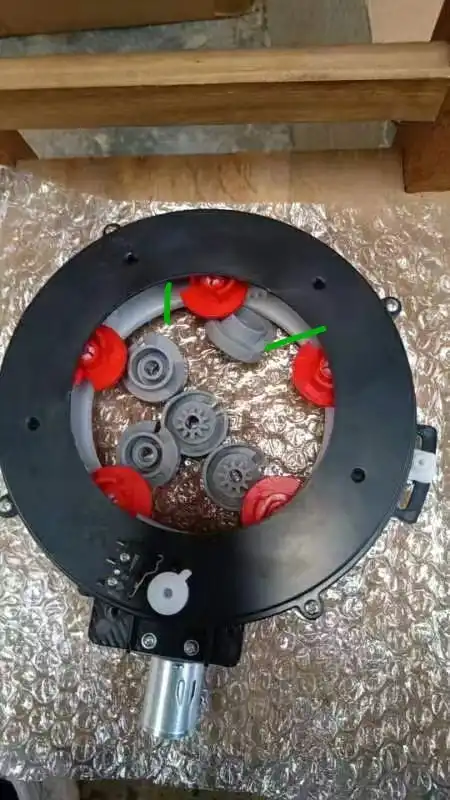
.webp)
.webp)

